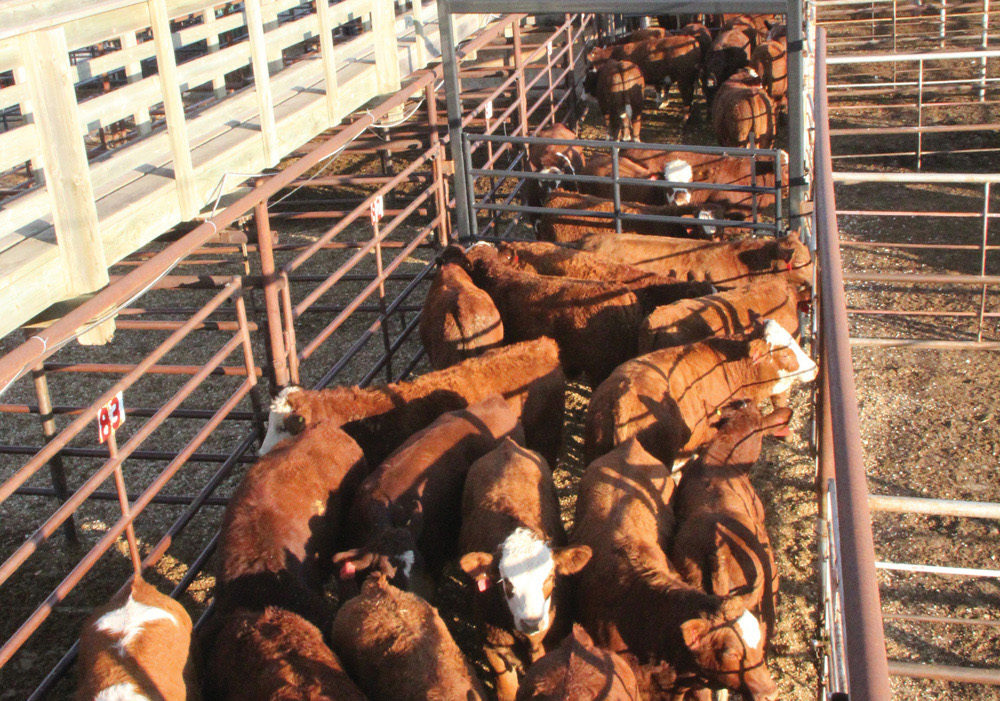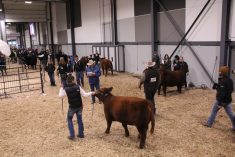Fed Cattle
Larger carcass weights and falling live cattle futures made way for lower fed cattle prices by mid-October. Slaughter rates remain solid while packers work through the remaining backlog. However, carcass weights have crept up in recent weeks in Canada, sounding a cautionary tone as feedlots become less current and more pounds must work through the system. The average steer carcass weight the week of October 10 increased 10 lbs. to an average weight of 952 lbs. This is 18 lbs. heavier than one year ago.
Technical markets came under pressure at the same time the market experienced larger front-end supply and a wider basis. Despite several negative forces, Canadian fed cattle continue to trade sideways, averaging $135.86/cwt the week of October 16. Compared to a year ago, the average is $8.51/cwt lower and $11.51/cwt under the five-year average.
Read Also

Body condition, nutrition and vaccination for brood cows
One of the remarkable events of the past century related to ranching has been the genetic evolution of brood cows….
Solid kill rates for this time of year are positive. Steer slaughter hit 1,328,265 head as of October 10, while heifer kill is 704,882 head. Fed production is running just two per cent under a year ago. Given the production pause earlier this year, it’s impressive to see recent demand keeping up with third and fourth quarter production so far.
The basis widened recently. Cash-to-cash is -$6.69/cwt as of mid-October, the widest basis for this time of year since 2014. A wider basis encourages U.S. buyer interest. Fed cattle exports to the U.S., including cows, are four per cent higher than a year ago at 364,751 head (as of October 3).
Cattle-on-feed numbers in Alberta and Saskatchewan are up nine per cent over a year ago as of October 1. The total, at 782,358, is the largest October 1 cattle-on-feed inventory since 2007. Placements in September were up two per cent to 216,086 head. Feeder exports are still well below year-ago levels.
Deb’s outlook for fed cattle: In the near term, volatility can be expected in response to the U.S. election. Also expect uncertainty due to the COVID-19 pandemic. Concerns about a possible second wave causing shutdowns and slowdowns in Canada — and therefore lowering prices for producers and limiting availability for consumers — keep the market somewhat unstable and should be monitored.
Positives such as climbing cut-out values heading into November, excellent demand both at the retail and export levels, as well as tightened front-end supply should strengthen prices near the end of 2020.
Feeder Cattle
Mild weather late in the third quarter kept many calves on fall pasture. However, as grazing slows and winter weather closes in, calves are coming to town. Volumes have picked up since the Thanksgiving holiday and are anticipated to remain high through October. As more calves come to town, higher grain costs are working against the cash market, as the feed barley price jumped 21 per cent over five weeks. As well, feedlots still struggle with losses incurred this year.
Calf prices are seeing seasonal pressure. The 550-lb. feeder steer price average fell $2.14/cwt in mid-October, sitting at $7.54/cwt under the year-ago market. Heifer calves at the same weight averaged $182.89/cwt mid-month, back $28.97/cwt from the steers. While the spread seems wide, it is unchanged from a year ago.
Heavier feeder numbers are light this time of year; however, values have remained solid. After posting a high at $193/cwt in September, the 850-lb. feeder steer price held steady at near $189/cwt. The mid-October average is $189.08/cwt, $9.78/cwt lower than the same week one year ago. The 850-lb. feeder basis remains strong at $5.38/cwt over the U.S. market.
Deb’s outlook for feeder cattle: As volumes increase seasonally, prices will be pressured lower. Along with increased volume, other factors are at play, negatively affecting the fall run. Feedlots have been operating with negative margins through much of 2020 and placing calves offside this fall, with few risk management opportunities available.
Feed barley price increases are starting to weigh heavily on the calf market. Expect further negative movement in the feeder calf market through October as larger calf numbers are available, cost of gain climbs, feedlots see losses and technical markets become volatile.
Non-fed Cattle
The D1,2 cow price finally moved away from the sideways trading pattern of the past several weeks. The mid-October D1,2 cow price averaged $80.67/cwt, down nearly $2/cwt since the start of the month and $5.93/cwt lower than the same week last year.
Cow slaughter, at 312,675 head as of October 10, is down 20 per cent from a year ago. This is because packers are using kill space to work through the fed cattle backlog created earlier. However, U.S. cow prices have been at a premium to Canadian cows, boosting live cow exports to the U.S.
Bulls price have been pressured recently. A mid-October average of $105.15/cwt is down from recent weeks but still nearly $3/cwt higher than a year ago.
Bull slaughter numbers are down 22 per cent, at 9,542 head, as of October 10, while exports are down eight per cent at 32,460 head.
Deb’s outlook for non-fed cattle: Cow prices will decrease seasonally through much of November as fall run brings more animals to town. That said, expect total volumes to remain lower than recent years. Producers have culled hard the past few years and have ample winter feed to carry more cow inventory. While a seasonal decline is expected, lower volume coupled with good beef and live export demand should limit downside moving forward. If we avoid factors such as COVID-19 slowdowns, cull cattle markets should begin to see a turn again near the end of 2020.
















